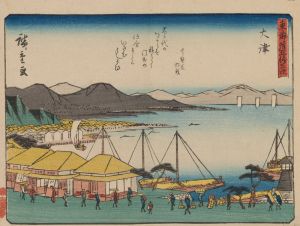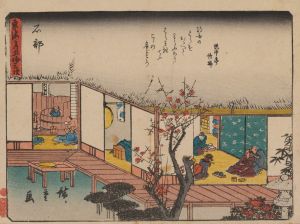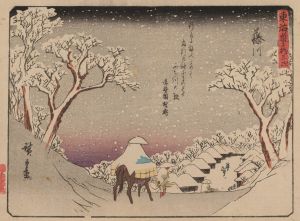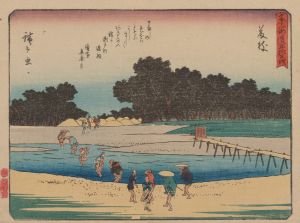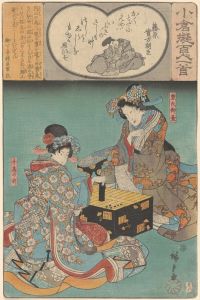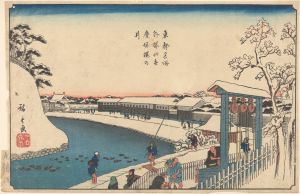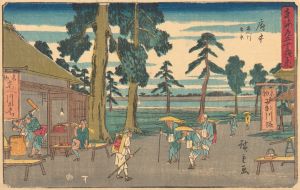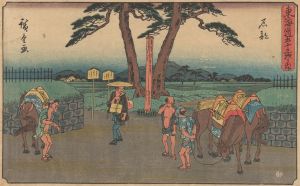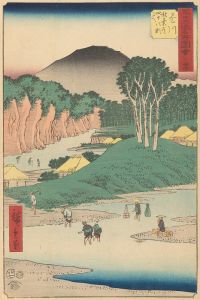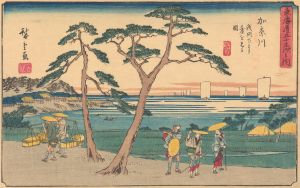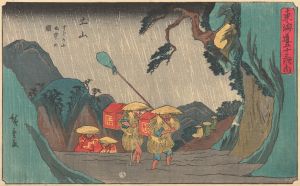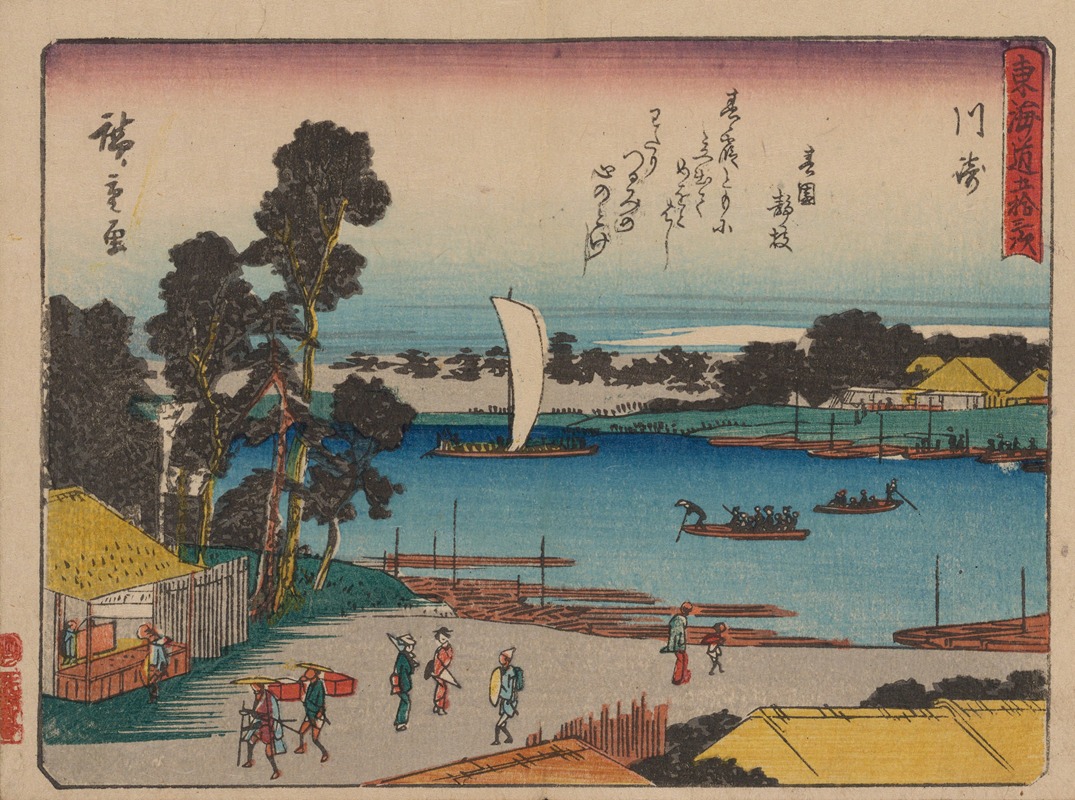
Tokaido gojusantsugi, Pl.03
A hand-painted replica of Andō Hiroshige’s masterpiece Tokaido gojusantsugi, Pl.03, meticulously crafted by professional artists to capture the true essence of the original. Each piece is created with museum-quality canvas and rare mineral pigments, carefully painted by experienced artists with delicate brushstrokes and rich, layered colors to perfectly recreate the texture of the original artwork. Unlike machine-printed reproductions, this hand-painted version brings the painting to life, infused with the artist’s emotions and skill in every stroke. Whether for personal collection or home decoration, it instantly elevates the artistic atmosphere of any space.
Tokaido gojusantsugi, Pl.03 by Andō Hiroshige
"Tokaido gojusantsugi, Pl.03" is a woodblock print created by the renowned Japanese ukiyo-e artist Andō Hiroshige (1797–1858). This artwork is part of Hiroshige's celebrated series titled The Fifty-Three Stations of the Tōkaidō (Tōkaidō Gojūsan-tsugi no Uchi), which was first published in the early 1830s. The series depicts the 53 post stations along the Tōkaidō, the main travel and trade route connecting Edo (modern-day Tokyo) and Kyoto during the Edo period in Japan.
Plate 03 specifically represents the station of Kanagawa, the third post station on the Tōkaidō. The scene captures a moment of daily life along the route, showcasing Hiroshige's skill in blending natural landscapes with human activity. In this print, travelers are depicted ascending a steep slope, with a view of the sea and distant mountains in the background. The composition highlights Hiroshige's mastery of perspective, as well as his ability to convey movement and atmosphere. The inclusion of figures, such as porters and travelers, adds a narrative element to the artwork, reflecting the bustling activity of the Tōkaidō during the Edo period.
Hiroshige's Fifty-Three Stations of the Tōkaidō series was inspired by his own journey along the route in 1832, when he joined an official delegation traveling to Kyoto. The series became immensely popular upon its release and is considered one of the most iconic works of Japanese ukiyo-e art. Hiroshige's innovative use of color, composition, and attention to detail helped establish his reputation as one of the leading landscape artists of his time.
The Kanagawa print, like others in the series, was created using the traditional Japanese woodblock printing technique. This involved carving the design into wooden blocks, inking them, and pressing them onto paper. Multiple blocks were used to apply different colors, resulting in the vibrant and intricate prints for which Hiroshige is known.
Hiroshige's work had a significant influence on Western art in the 19th century, particularly on the Impressionist and Post-Impressionist movements. Artists such as Vincent van Gogh and Claude Monet admired and studied his prints, incorporating elements of Japanese aesthetics into their own works.
Today, Tokaido gojusantsugi, Pl.03 is recognized as a masterpiece of ukiyo-e art and is preserved in various collections and museums worldwide. It continues to be celebrated for its historical significance and artistic excellence, offering a glimpse into the culture and landscapes of Edo-period Japan.





